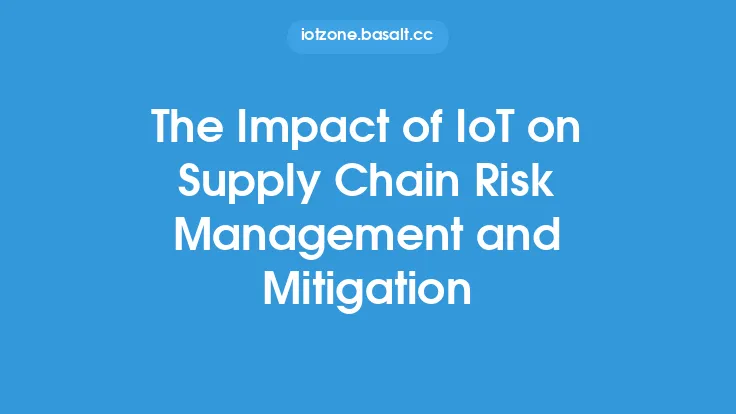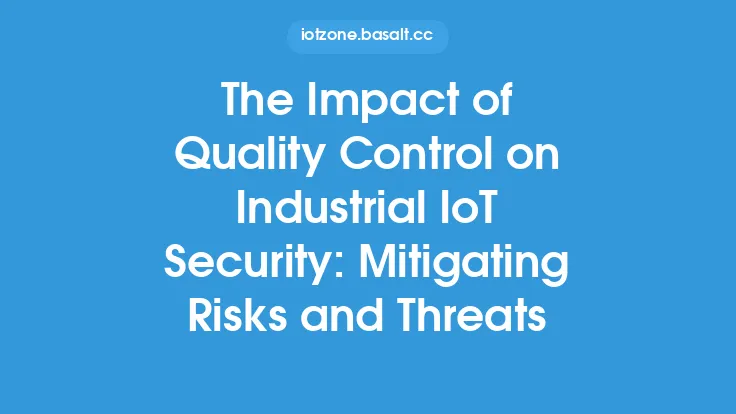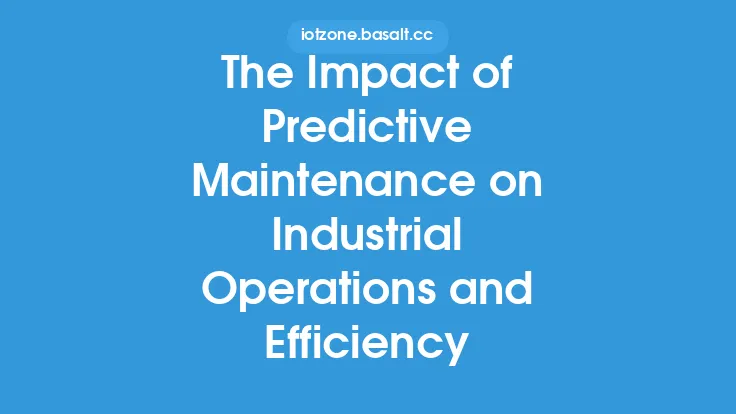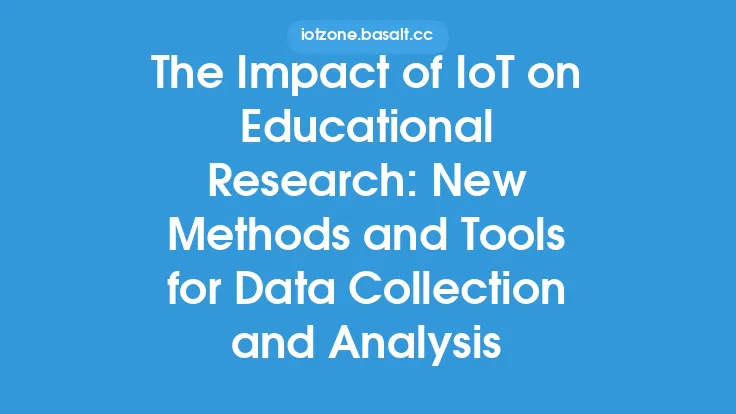The world is grappling with the challenges of climate change, which is having a profound impact on the environment, human health, and the economy. As the global community seeks to mitigate and adapt to the effects of climate change, the Internet of Things (IoT) is emerging as a key technology that can help address this pressing issue. IoT refers to the network of physical devices, vehicles, home appliances, and other items that are embedded with sensors, software, and connectivity, allowing them to collect and exchange data. In the context of climate change, IoT can play a crucial role in monitoring, reporting, and mitigating its effects.
Introduction to IoT in Climate Change Mitigation
IoT can contribute to climate change mitigation by reducing greenhouse gas emissions, improving energy efficiency, and promoting sustainable practices. One of the primary ways IoT can achieve this is through the use of smart sensors and devices that can monitor and control energy consumption in buildings, industries, and transportation systems. For instance, smart thermostats can learn a building's temperature preferences and adjust the heating and cooling systems accordingly, reducing energy waste and lowering emissions. Similarly, IoT-enabled smart grids can optimize energy distribution, predict energy demand, and integrate renewable energy sources into the grid, reducing reliance on fossil fuels.
IoT in Climate Change Adaptation
In addition to mitigation, IoT can also play a critical role in climate change adaptation. As the effects of climate change become more pronounced, communities will need to adapt to rising sea levels, more frequent natural disasters, and changing weather patterns. IoT can help communities prepare for and respond to these challenges by providing real-time data and insights on weather patterns, sea levels, and soil moisture. For example, IoT sensors can be deployed in flood-prone areas to monitor water levels, providing early warnings to residents and emergency responders. Similarly, IoT-enabled weather stations can provide hyperlocal weather forecasts, enabling farmers to make informed decisions about planting, harvesting, and irrigation.
IoT Technologies for Climate Change Mitigation and Adaptation
Several IoT technologies are being used to mitigate and adapt to climate change. These include wireless sensor networks (WSNs), radio-frequency identification (RFID), and machine-to-machine (M2M) communication. WSNs, for instance, can be used to monitor environmental parameters such as temperature, humidity, and air quality, providing valuable insights for climate modeling and prediction. RFID can be used to track and manage inventory, reducing waste and emissions in supply chains. M2M communication can enable devices to communicate with each other, optimizing energy consumption and reducing the need for human intervention.
Big Data and Analytics in IoT-Based Climate Change Mitigation
The large amounts of data generated by IoT devices can be analyzed using big data and analytics techniques to gain insights into climate patterns, energy consumption, and environmental parameters. This can help identify areas of inefficiency, predict energy demand, and optimize resource allocation. For example, machine learning algorithms can be used to analyze data from IoT sensors to predict energy consumption patterns, enabling utilities to optimize energy distribution and reduce waste. Similarly, data analytics can be used to identify areas of high energy consumption, enabling policymakers to develop targeted interventions to reduce emissions.
Challenges and Limitations of IoT in Climate Change Mitigation
While IoT has the potential to play a significant role in climate change mitigation and adaptation, there are several challenges and limitations that need to be addressed. These include the lack of standardization, interoperability, and security in IoT devices, which can hinder their ability to communicate with each other and provide accurate data. Additionally, the deployment of IoT devices in remote or hard-to-reach areas can be challenging, requiring specialized equipment and expertise. Furthermore, the analysis of large amounts of data generated by IoT devices can be computationally intensive, requiring significant resources and infrastructure.
Future Directions for IoT in Climate Change Mitigation
Despite the challenges and limitations, the future of IoT in climate change mitigation and adaptation looks promising. As the technology continues to evolve, we can expect to see more widespread adoption of IoT devices and systems, particularly in industries such as energy, transportation, and agriculture. The development of new IoT technologies, such as edge computing and 5G networks, will enable faster and more efficient data processing, reducing latency and improving real-time decision-making. Additionally, the integration of IoT with other technologies, such as artificial intelligence and blockchain, will enable more sophisticated and secure data analysis, providing new insights and opportunities for climate change mitigation and adaptation.
Conclusion
In conclusion, IoT has the potential to play a significant role in climate change mitigation and adaptation. By providing real-time data and insights on environmental parameters, energy consumption, and weather patterns, IoT can help reduce greenhouse gas emissions, improve energy efficiency, and promote sustainable practices. While there are challenges and limitations to be addressed, the future of IoT in climate change mitigation looks promising, with new technologies and innovations emerging to address these challenges. As the global community continues to grapple with the challenges of climate change, IoT is likely to emerge as a key technology in the quest for a more sustainable and resilient future.




